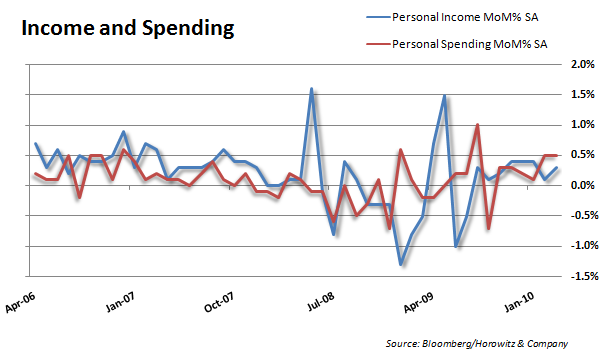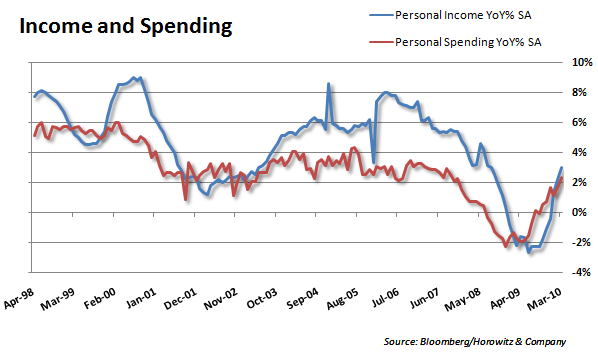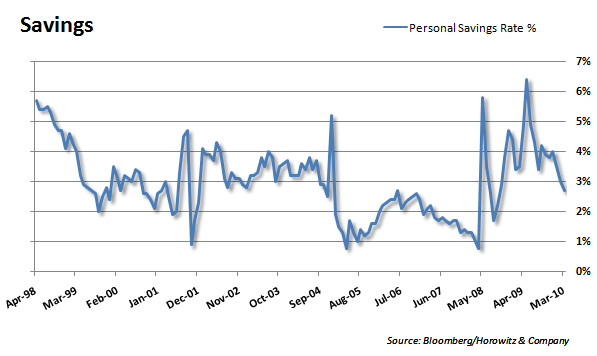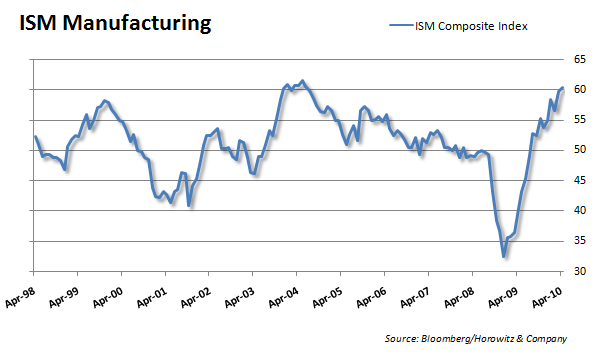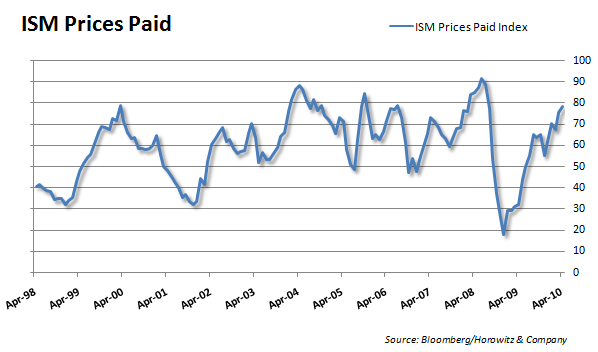For the most part, analysts were surprisingly accurate for the reports and indicators that were released today. Most still point to a recovery scenario that is on par with many of the last moves from the troughs of recessions. Still, after the disappointing results from the GDP report on Friday, there is still a mood od concern.
Probably the most telling is the fact that volume is soft in today’s trading, even though markets are nicely higher.
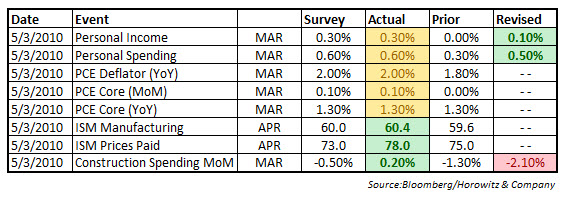 As for income and spending, the savings rate is dropping at a steep slope, which continues to indicate that a good deal of spending is occurring. That is also shown in the the MoM and YoY charts. Even as we see income only ticking up slightly MoM, spending is maintaining.
As for income and spending, the savings rate is dropping at a steep slope, which continues to indicate that a good deal of spending is occurring. That is also shown in the the MoM and YoY charts. Even as we see income only ticking up slightly MoM, spending is maintaining.
On an YoY basis, the differential is even more pronounced. But this time, income is outpacing spending. Now, we know how much we all like spending, and that will continue to show up as long as rates stay low and the jobs picture looks better and better. Even though the U Mich confidence numbers were a disappointment from expectations, they were still showing a cheery mood for consumers.
From Briefing.com
ISM Shows Manufacturing Expanding at its Fastest Rate Since June 2004
According to the latest ISM report, the manufacturing sector is not only expanding, but growing at its fastest rate since June 2004.
- The index increased from 59.6 in March to 60.4 in April, beating expectations of 60.0.
- Compared to the Chicago PMI numbers released last week, where just about all of the subindexes strengthened, the ISM data was slightly more volatile.
- The expansion in production and new orders picked up steam as the indexes increased from 61.1 to 66.9 and from 61.5 to 65.7, respectively.
- Order backlogs weakened but remained in the expansion phase as the index dropped from 58.0 to 57.5. That level is still sufficiently large enough so that a drop in new orders would not harm production immediately.
- After one month of expansion, inventories reverted back to their contraction phase as the index declined from 55.3 to 49.4


